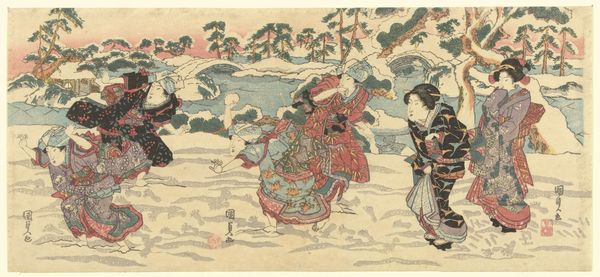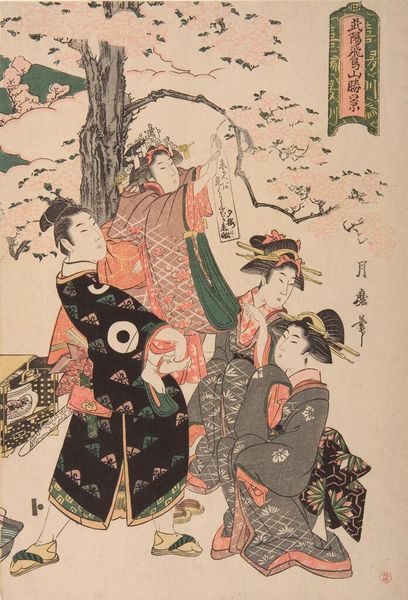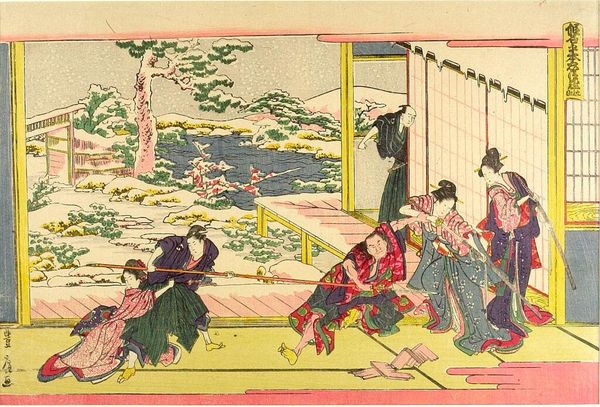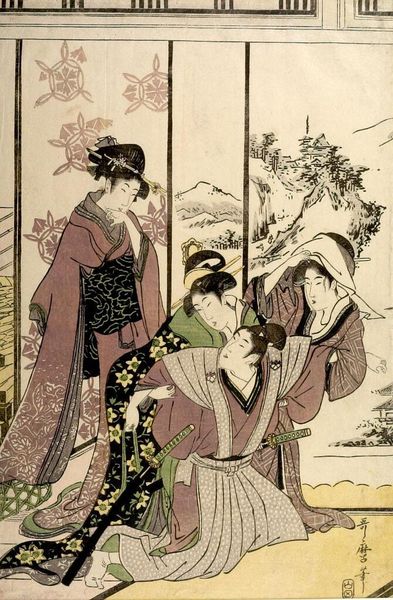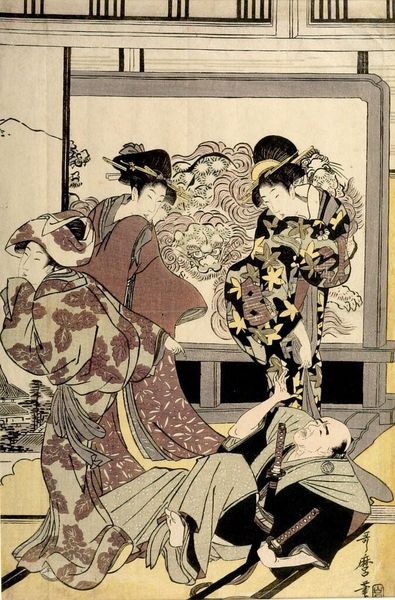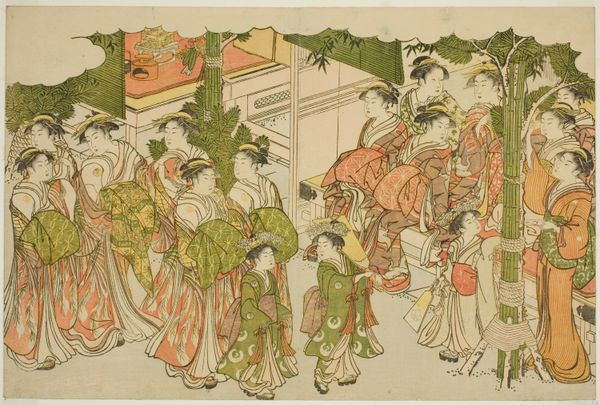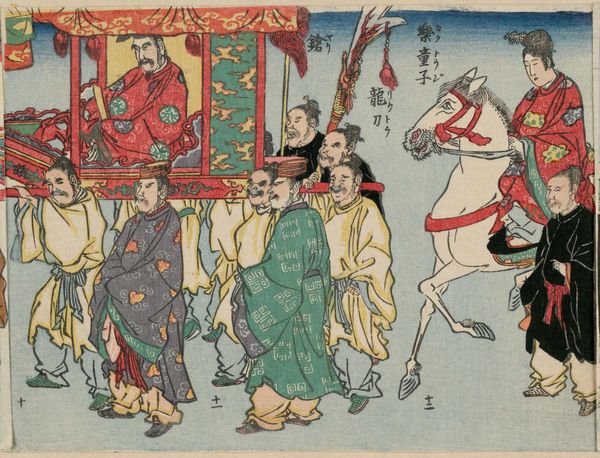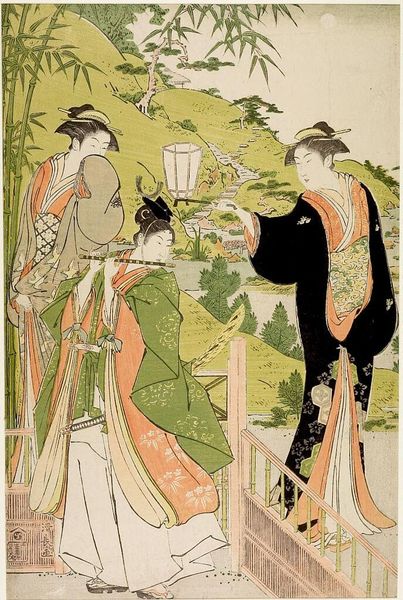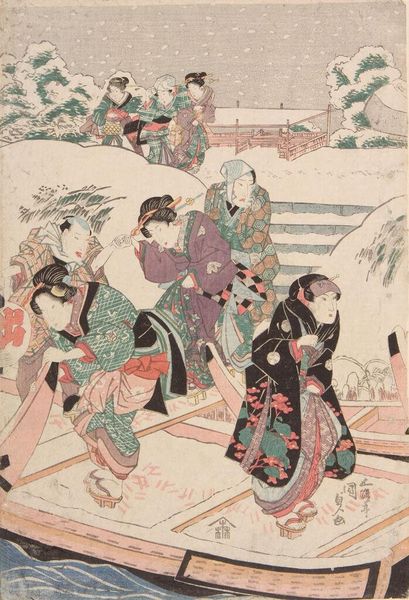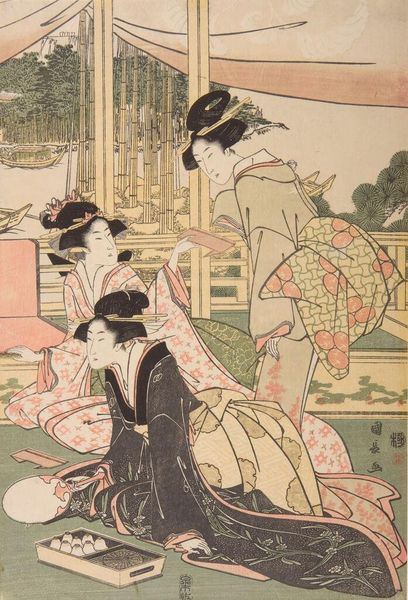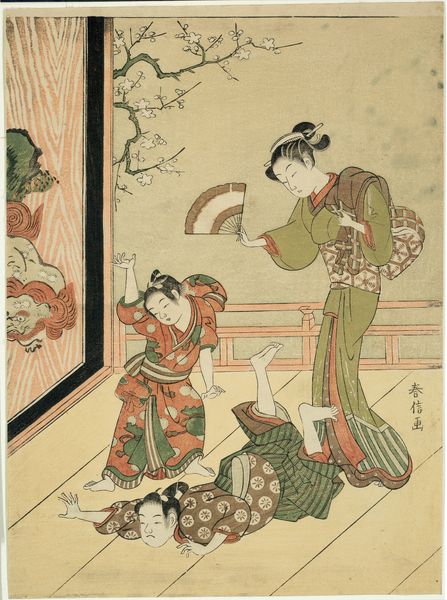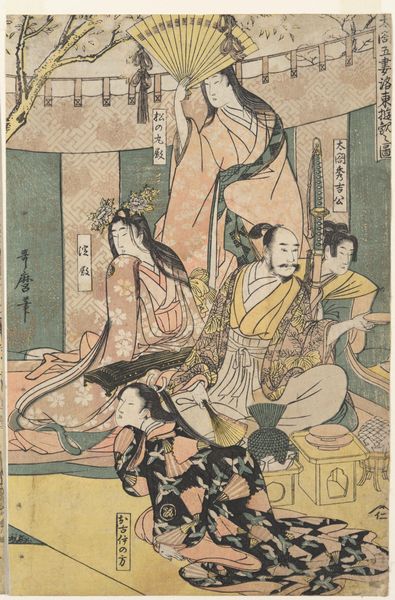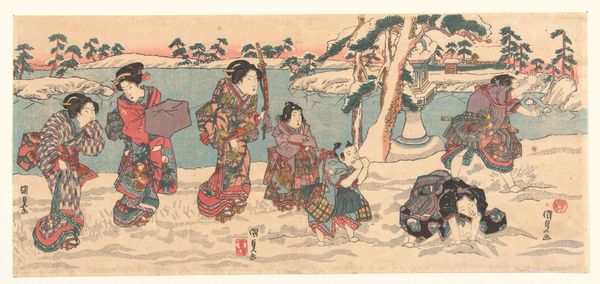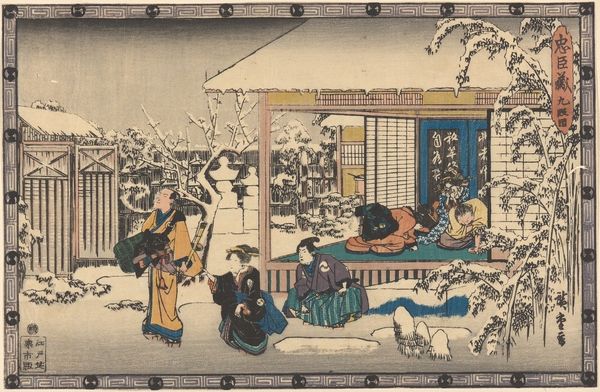
Copyright: Public Domain: Artvee
Curator: This is "New Year’s Day in Tokyo," a color woodblock print made by Helen Hyde in 1914. It captures a vibrant New Year celebration. Editor: It has a delightful energy. The composition is a lively burst of people and what look like stylized insects, rendered with crisp lines and soft colors. Curator: Hyde was an American artist who spent significant time in Japan, deeply influenced by the Ukiyo-e tradition. We can certainly see that here. She exhibited widely and really contributed to the West's understanding and interest in Japanese printmaking techniques. Editor: The process really shines through. I’m drawn to the texture evident in the woodblock. You can almost feel the grain beneath the layers of ink, and imagine her hand carving the block, paying homage to traditions of craftsmanship. Do you think the intended audience perceived this mainly for art purposes, or practical as a tool for learning about other cultural expressions? Curator: Certainly both. It was exhibited as art but also played a role in shaping cultural perceptions of Japan for Western audiences. It reflects a complex Orientalist dynamic. Hyde became renowned in the United States largely by documenting Asian themes that were deemed 'tasteful'. Editor: Right, a specific taste manufactured and presented, if you will. Considering Hyde's use of printmaking, an accessible medium, how might this choice have played into notions of accessibility and understanding for the viewers engaging with imagery that likely seemed both familiar and foreign at once? Curator: Mass reproduction certainly made her work accessible but remember it was consumed by the relatively privileged classes in the United States and Europe. They had an appetite for these depictions of the exotic Orient. Editor: Still, looking at the flattened perspective, simplified forms, and the emphasis on decorative patterns, it speaks to an appreciation for the inherent qualities of the materials themselves, something Ukiyo-e mastered centuries prior. Curator: This artwork occupies a critical intersection, therefore, reflecting cross-cultural exchanges, artistic agency, and the complex politics of representation. Editor: It really causes one to consider how we place such artworks today: it certainly acts as both cultural document and artifact of studio production, right?
Comments
No comments
Be the first to comment and join the conversation on the ultimate creative platform.
